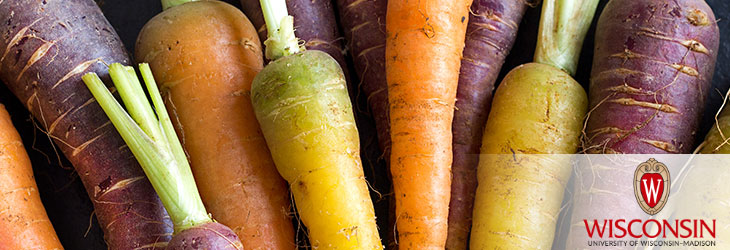Animals, Agriculture & Food

Gene Interactions Positively Affect Embryonic Survival in Dairy Cattle
WARF: P090396US02
Inventors: Hasan Khatib
The Wisconsin Alumni Research Foundation (WARF) is seeking commercial partners interested in developing a combination of genes that are associated with reproductive performance in cattle.
Overview
Reproductive performance in high-producing dairy cows is declining. The decrease in fertility and early embryonic survival rate is a serious problem worldwide, leading to increased dairy cow culling and economic loss. It likely is caused by several factors, including genetics.
Signal transducer and activator of transcription (STAT) proteins are transcription factors that play important roles in cytokine signaling pathways. Recent studies have shown that STAT proteins are involved in the fertilization process and early embryonic development.
A UW–Madison researcher previously identified single nucleotide polymorphisms (SNPs) that are associated with fertility and embryonic survival in dairy cattle, including a SNP in the STAT5A gene. Identification of more genes associated with reproduction traits is needed to facilitate genetic testing of cattle to enable quick and accurate evaluation of fertility and embryo survival rate.
Signal transducer and activator of transcription (STAT) proteins are transcription factors that play important roles in cytokine signaling pathways. Recent studies have shown that STAT proteins are involved in the fertilization process and early embryonic development.
A UW–Madison researcher previously identified single nucleotide polymorphisms (SNPs) that are associated with fertility and embryonic survival in dairy cattle, including a SNP in the STAT5A gene. Identification of more genes associated with reproduction traits is needed to facilitate genetic testing of cattle to enable quick and accurate evaluation of fertility and embryo survival rate.
The Invention
Using an in vitro fertilization system, the UW–Madison researcher now has identified two SNPs in the STAT3 gene that are associated with reproduction. He discovered that the combination of the two STAT3 SNPs, as well as the combination of a previously known STAT1 SNP and one of the STAT3 SNPs, are correlated with embryonic survival. The presence of both STAT3 SNPs or one of the STAT3 SNPs and the STAT1 SNP showed a greater association with desirable reproduction traits than either STAT3 SNP alone.
Applications
- Dairy cattle breeding to improve fertility and embryo survival
Key Benefits
- Provides additional genetic tools for use in selective cattle breeding to enhance fertility rate and embryonic development
- Enables selection decisions to be made earlier than in traditional breeding programs, thereby shortening the generation interval for cattle breeding
- DNA markers are easy to measure, unambiguous and co-dominant.
Additional Information
For More Information About the Inventors
Related Technologies
- WARF reference number P06197US describes the first reported gene, STAT5, to affect embryo survival in mammals.
- WARF reference number P08266US describes a SNP in the FGF2 gene that is highly correlated with embryonic survival.
- WARF reference number P09013US02 describes a panel of SNPs from the interferon-τ pathway that is associated with fertility and embryo survival in cattle.
Related Intellectual Property
Publications
- Khatib et al. 2009. Effects of Signal Transducer and Activator of Transcription (STAT) Genes STAT1 and STAT3 Genotypic Combinations on Fertilization and Embryonic Survival Rates in Holstein Cattle. J. Dairy Sci. 92, 6186-6191.
- Khatib H, Monson RL, Huang W, Khatib R, Schutzkus V, Khateeb V, Parrish JJ (2010) Validation of In-vitro Fertility Genes in a Holstein Bull Population. J. Dairy Sci. 93(5):22449
Tech Fields
For current licensing status, please contact Emily Bauer at [javascript protected email address] or 608-960-9842